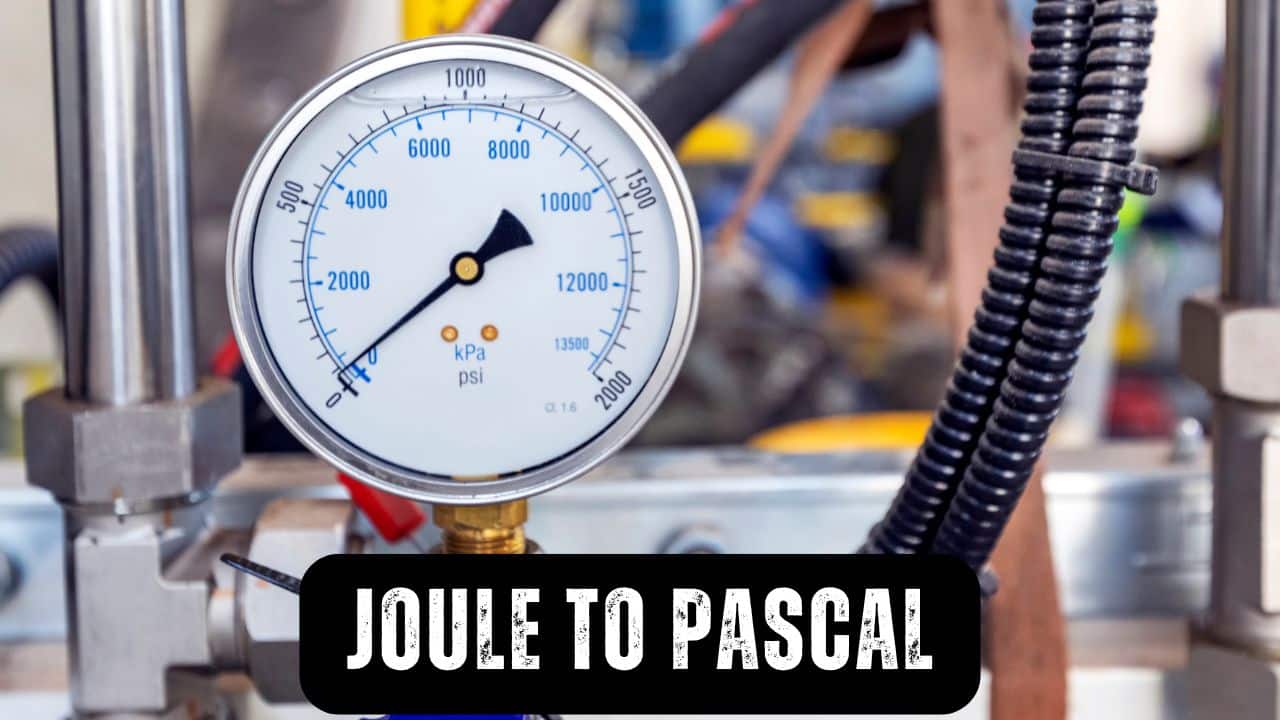Joule to Pascal Calculator
Convert energy from Joules (J) to Pascals (Pa)

How to Relate Joules to Pascals
Note: A joule cannot be directly converted to pascals since they measure different physical quantities:
- Joule (J) is a unit of energy or work
- Pascal (Pa) is a unit of pressure, defined as force per unit area (N/m²)
The relationship between them involves area and distance. To convert between energy (joules) and pressure (pascals), you would need additional information like the area over which the force is applied. The general relationship is:
Pressure (Pa) = Force (N) / Area (m²)
Energy (J) = Force (N) × distance (m)
Since they measure different properties, they cannot be directly converted. However, energy density (energy per unit volume) is sometimes expressed in J/m³, which is equivalent to Pa because:
1 J/m³ = 1 N/m² = 1 Pa
Energy-Pressure Relationship
Quick Trick: To find pressure from energy, use P = E/V!
Understanding the Relationship
Pressure is defined as force per unit area. In terms of energy, when energy is applied over a volume, it creates pressure. This relationship is fundamental in physics and engineering!
For example, if you have 1 joule of energy applied over a volume of 1 cubic meter, the pressure would be 1 pascal.
You need to use the actual units for newtons, pascals, and joules:
- 1 N = 1 kg•m/s²
- 1 Pa = 1 N/m² = 1 kg•m/s²/m² = 1 kg/m•s²
- 1 J = N•m = 1 kg•m/s²•m = 1 kg•m²/s²
If you multiply 1 Pa by 1 m³, the result is 1 J:
1 Pa × 1 m³ = 1 kg/m•s² × 1 m³ = 1 kg•m²/s² = 1 J
The relationship between them involves area and distance. To convert between energy (joules) and pressure (pascals), you would need additional information like the area over which the force is applied.
The general relationship is:
Pressure (Pa) = Force (N) / Area (m²)
Energy (J) = Force (N) × distance (m)
Since they measure different properties, they cannot be directly converted. However, energy density (energy per unit volume) is sometimes expressed in J/m³, which is equivalent to Pa because:
1 J/m³ = 1 N/m² = 1 Pa
What Do These Terms Really Mean?
Joule (J) – A Unit of Energy
Joules are a standard unit of energy. Here’s what you need to know:
- Used to measure energy, work, or heat.
- 1 joule is the energy needed to move a force of 1 newton over 1 meter.
Pascal (Pa) – A Unit of Pressure
Pascals are a standard unit of pressure. Here’s what you need to know:
- Used to measure pressure in the metric system.
- 1 pascal is equal to 1 newton per square meter.
